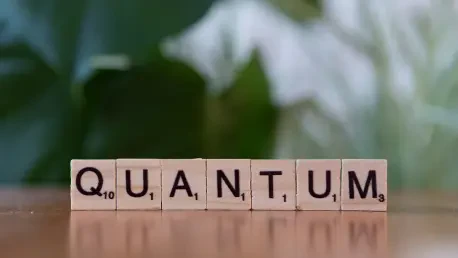The intersection of quantum computing and computer vision represents a promising frontier in technological advancement. As traditional computer vision systems continue to evolve, integrating quantum computing offers an exciting enhancement in speed and accuracy. MicroAlgo Inc.’s recent development of a Quantum Convolutional Neural Network (QCNN) architecture stands as a testament to harnessing quantum principles like superposition and entanglement. This method seeks not only to redefine image recognition processes but also to introduce profound changes in how visual data is processed and understood.
Bridging Quantum Mechanics and Computer Vision
Quantum Convolutional Neural Network (QCNN) Fundamentals
Quantum computing’s introduction into computer vision via the QCNN architecture is a strategic step toward harnessing the full power of quantum mechanics. The integration sees qubits, fundamental to quantum computing, leverage superposition—where qubits exist in multiple states simultaneously—and entanglement, which links qubits in such a way that the state of one can depend on another, allowing for parallel processing capabilities that surpass classical constraints.
In this emerging model, traditional CNN layers like convolution, pooling, and fully connected layers are blended with quantum abilities. The result is an architecture capable of meeting demanding computational requirements while maintaining high accuracy in tasks such as image recognition. The process involves the meticulous preparation of data, where image or video data undergoes collection and preprocessing. This preparation ensures the data is compatible with the high-level demands of quantum processing before encoding onto qubits. Once encoded, these qubits engage in deep feature extraction through the QCNN’s quantum convolutional layer while quantum parallelism techniques allow for a faster and more refined feature identification process.
Superposition and Entanglement in Visual Data Processing
The transition from classical methods to quantum solutions in visual data processing is marked by the application of superposition and entanglement—a hallmark of quantum computing. Superposition allows images to be considered in multiple states simultaneously, enabling a richer analysis of features that classical computers might miss. Entanglement then works to relate these features, forming complex associative networks that can enhance the recognition process.
Further deepening this enhancement is the quantum pooling layer, which applies dimension reduction to the processed data. This layer simplifies the complexity of feature-rich images while keeping critical elements intact. As a result, the computational workload is reduced significantly, allowing subsequent quantum fully connected layers to classify these features efficiently. The outcome is a system that not only boosts the computational speed of recognizing features but also ensures precision in identifying and classifying visual data, setting a new benchmark in computer vision tasks.
The Future of Quantum Visual Computing
Transformative Impacts on Image Recognition
MicroAlgo’s QCNN presents a transformative narrative for the future of image recognition, pointing toward an era where traditional computational models begin to blend effortlessly with quantum mechanics. This development represents a pivotal move in how computers can process visual data with unparalleled efficiency. The traditional limitations, such as slow processing speeds and inaccuracies in feature recognition, can be circumvented with the powerful parallelism enabled by quantum computing principles.
These quantum-boosted methods have vast potential applications, from healthcare imaging systems that require rapid and accurate analysis to real-time object detection in autonomous driving systems. The advantages promise to stream alongside sectors heavily reliant on precise and swift image processing, transforming industries and setting new standards in technological capability. Quantum computation offers a broader horizon where classical and quantum strategies collaborate to achieve outcomes previously deemed unreachable.
Future Developments and Industry Standards
The convergence of quantum computing and computer vision marks a significant breakthrough in technological innovation. As conventional computer vision systems advance, the incorporation of quantum computing promises remarkable improvements in both speed and precision. MicroAlgo Inc. has recently developed a Quantum Convolutional Neural Network (QCNN) architecture, highlighting the ability to utilize quantum mechanics principles such as superposition and entanglement. This innovative approach aims to revolutionize image recognition processes fundamentally while profoundly altering how visual information is processed and comprehended. The QCNN leverages quantum capabilities to surpass the limits of classical computing, potentially enabling tasks to be carried out more efficiently and accurately. By harnessing the extraordinary potential of quantum computing, MicroAlgo Inc.’s work suggests that the future of visual data processing could undergo a transformation, ushering in new possibilities for fields reliant on image analysis like medicine, security, and artificial intelligence.









